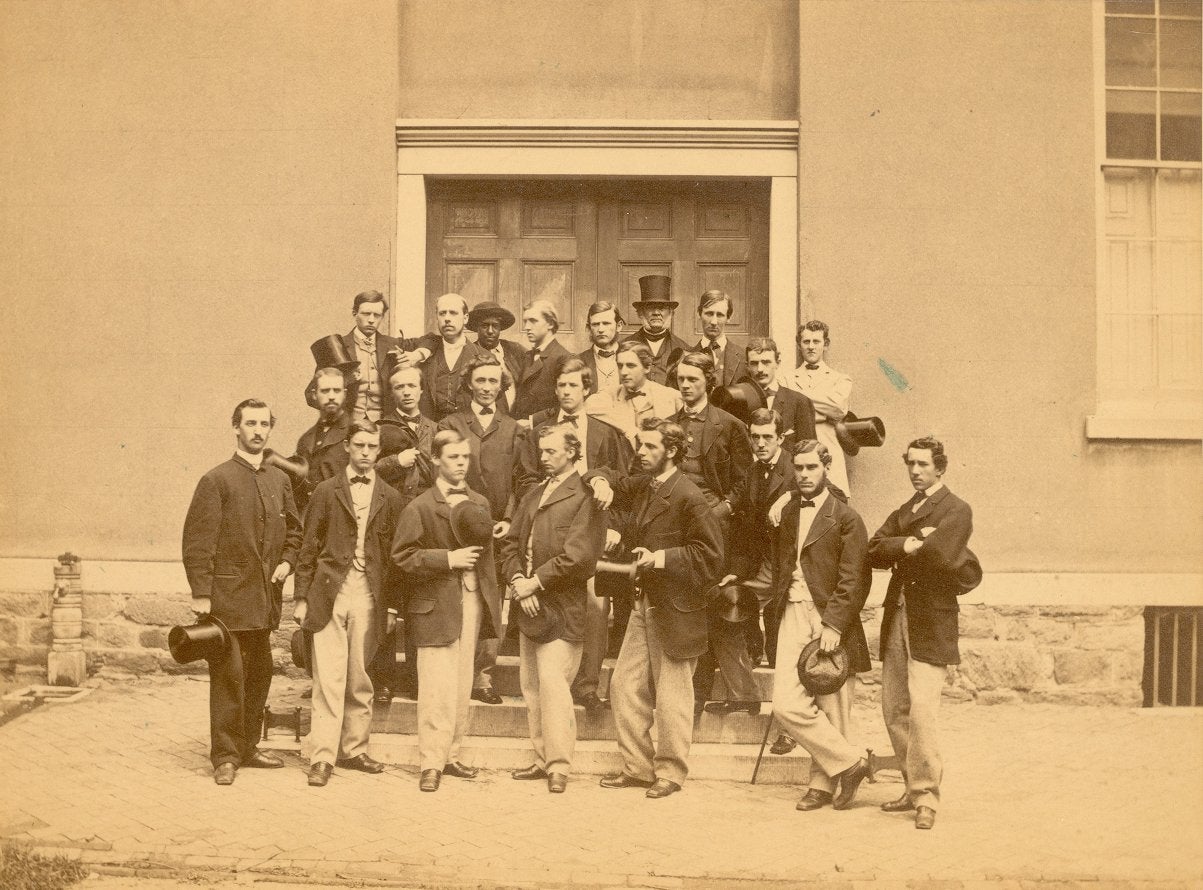Introduction
Significance of the Class of 1865
Between Pennsylvania’s past – Franklin and Morgan, Arch and Chestnut – and its modern present – Van Pelt and Huntsman, Hey Day and Spring Fling – lies the class of 1865, forming a symbolic bridge between what the once University was and what it has become.
Penn Before the Civil War
Before the entry of the College Class of 1865, the University of Pennsylvania was a small, provincial institution of higher learning still closely resembling Penn in the eighteenth-century. The curriculum was classically based and rooted in academic notions unchanged for over a century. There was no major library; professors taught by lecture, not by texts. Though the Medical Department and Law lectures gave the school a professional feel, Franklin’s vision of a practical education was left unfulfilled; departments such as Wharton, Engineering, and Nursing were yet to be dreamt of.
Extracurricular “student life” as we know it today barely existed. The University campus was limited to two buildings on Ninth Street below Market Street. Student organizations consisted of two rival literary societies, Philo and Zelo, and four fledgling fraternities. Athletics were largely limited to pick-up games or sports pursued outside of the University. And the presence of women and minorities were unthinkable. Penn in 1860 offered none of the diversity and choice available to the twenty-first century undergraduate.
The Beginnings of Extra-Curricular Life and a Changing Curriculum for the Industrial Age
The Class of 1865, despite the disruptions of the Civil War, was instrumental in creating a common student life outside of the classroom. There would be no dorms until the 1890s; most students were from Philadelphia and lived at home; the few non-Philadelphians had to find their own lodgings. The Class of 1865 went beyond fraternites and the literary organizations of Philo and Zelo, even beyond the Glee Club and the University Light Artillery. The organized sports, student publications, and student traditions begun by members of this class went along way toward creating a feeling of community among the students.
During their years in the College, the Class of 1865 began customs such as Class Day, Senior Honor Awards, and the Bowl Fight, creating a common culture for undergraduates that would long endure. Members of this class also participated in Penn’s first intercollegiate athletic events, in cricket and in baseball. This class produced Penn’s first printed yearbooks, the 1863 University Society Record and the 1865 University Record.
As seen in the biographies of the members of the Class of 1865, the College was still educating future clergymen, professors in the classics, lawyers, and doctors; but many members of the Class of 1865 went on to work in industry, trade and finance. The College of Agriculture, Mines, Arts, and Mechanic Arts, originating in 1852, was not yet large enough to satisfy some members of the class, who left Penn to study architecture, engineering and mining at other institutions here and abroad.
The College, and the larger University, were on the edge of major changes in academic and extracurricular life. The move to West Philadelphia in 1872 would provide the opportunity for these changes begun during the early 1860s to develop more fully.

